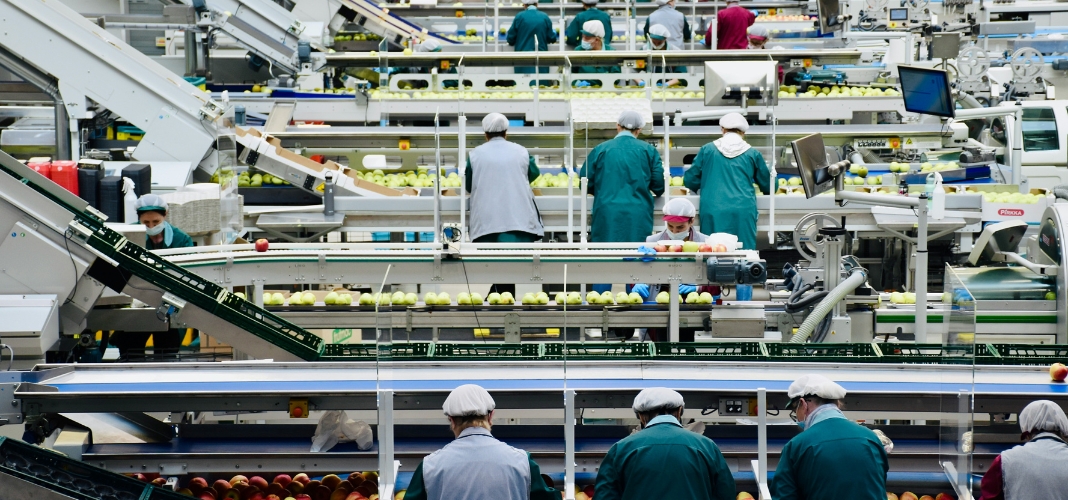Welcome to the Connected Kitchen
Think the food and beverage industry is all about flavors and freshness? Well, behind the scenes, it’s just as much about data, devices, and digital harmony. As global demands rise and tech advances, companies need to make sure their Information Technology (IT) and Operational Technology (OT) aren’t just working—they’re working together. Let’s break down why IT/OT integration is the secret sauce to a smarter, more sustainable, and scalable future in this deliciously complex industry.
1. The Digital Dilemma: IT and OT in Silos
IT and OT have traditionally lived in different worlds—one’s all about data, the other’s about machines. But in today’s data-driven landscape, these worlds can’t afford to remain separate. When they do, decisions take longer, systems break down, and security gaps open wide. Integration brings these departments into sync, laying the foundation for seamless communication and automation across the production line.
2. Why Connectivity Isn’t Enough Without Visibility
Sure, more devices are connected than ever—but are they visible and secure? Not always. Without proper oversight, even the most connected factories can be vulnerable to cyberattacks or costly downtime. Visibility into every digital nook and cranny of your operations isn’t a luxury anymore—it’s a necessity for safety, efficiency, and resilience.
3. Going Global? Your Network Needs to Keep Up
With globalization turning up the heat, food and beverage companies must adapt quickly—often expanding to new locations and scaling up production. But rapid growth can create messy, mismatched networks. Standardizing and integrating networks across all facilities ensures smooth production, quick scaling, and consistent quality.
4. Doing More with Less: The Workforce Crunch
It’s no secret—skilled tech workers are in short supply. And the few who remain are stretched thin. That’s why intuitive, standardized networks that are easier to operate and maintain are critical. Not only do they reduce the burden on your team, but they also empower less-experienced workers with simplified systems and guided onboarding.
5. Old Data, New Problems: Why Legacy Systems Fall Short
You may think you’re making data-driven decisions—but if that data is coming from outdated, siloed systems, you might just be spinning your wheels. Integrated networks allow real-time access to fresh, actionable data from all corners of the plant, so you’re not just informed, you’re accurately informed.
6. Building Smarter Networks, From the Ground Up
So how do you actually make this integration happen? Start with a rock-solid network infrastructure—one that’s secure, scalable, and redundant. This backbone enables everything from edge computing to cloud services, meeting both business intelligence needs and industry safety requirements. A reliable digital spine supports your whole operation.
7. Sustainability Starts with Smarter Systems
Green goals are becoming industry standards, and integrated networks can help meet them. Think long-lasting hardware, remote access that reduces travel, and systems designed to monitor and manage energy use efficiently. When your network is designed to last, your sustainability game levels up too.
8. Remote, Resilient, and Ready: The Power of Remote Access
Remote monitoring and service aren’t just convenient—they’re essential in a world where skilled personnel may not always be on-site. With the right infrastructure, you can support global operations, reduce downtime, and keep things running smoothly from anywhere.
9. Train the Team While You Transform
Digital transformation isn’t just about tech—it’s about people too. Whether it’s “over the shoulder” training during network commissioning or bringing in external experts to upskill your workforce, knowledge transfer is key. Investing in training means smoother implementation and more confident teams.
Conclusion: It’s Time to Bridge the Gap
IT/OT integration isn’t just a trend—it’s the foundation of the food and beverage industry’s future. Whether you’re chasing efficiency, aiming for sustainability, or simply trying to keep up with the digital age, bringing IT and OT together is the way forward. Ready to connect the dots?


